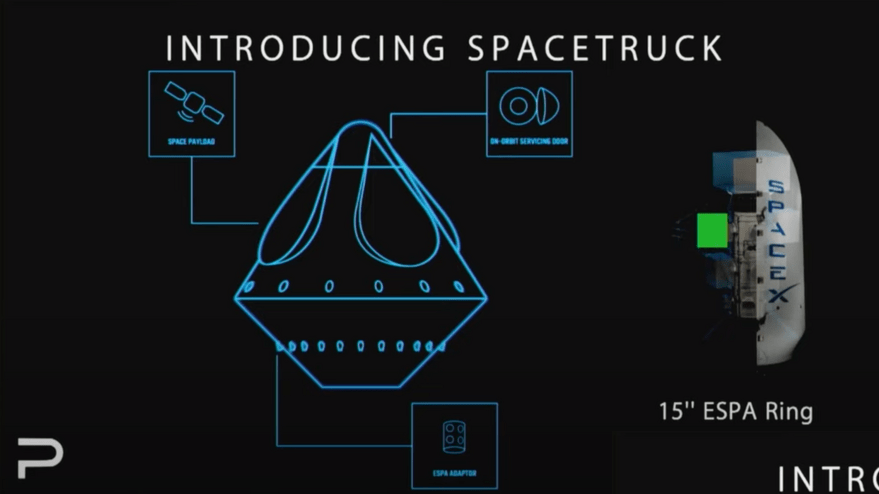13.02.2023

SpaceTruck is a reusable third stage to move satellites in orbit and offer re-entry to specific locations on Earth. Credit: Plasmos
PALO ALTO, Calif. – Plasmos revealed plans to offer in-space transportation and to return payloads to Earth with a Space Truck.
The Space Truck, powered by Plasmos’ dual-mode propulsion system, will transport payloads to altitudes as high as 1,400 kilometers “to enable in-space manufacturing, last-mile delivery, point-to-point transportation, on-orbit servicing and active debris removal,” Plamso CEO Ali Baghchehsara said Feb. 9 during Plasmos’ unveiling of the Space Truck.
Various configurations of the 3D-printed Space Truck will travel to low-Earth orbit as secondary payloads on launch vehicle ESPA rings. (ESPA is short for Evolved Expendable Launch Vehicle Secondary Payload Adapter.)
In the Flatbed configuration, the Space Truck can accommodate one 400-kilogram satellite. In the Musketeer configuration, the Space Truck has room for four 75-kilogram satellites and a six-kilogram payload that could remain in space or return to Earth. For on-orbit servicing, Plasmos plans to offer the AAA Truck with robotic arms, satellite refueling and spacecraft maintenance gear.
Plasmos also will offer precision reentry, landing payloads in a one square kilometer area, Baghchehsara said.
Plasmos’ plans to conduct its first technology demonstration flight in January 2024 has captured the attention of potential customers and partners including the Pentagon’s Defense Innovation Unit (DIU), which identifies commercial technology with military applications, and on-orbit refueling business Orbit Fab.
Ryan Weed, DIU program manager, lauded Plasmos’ innovative propulsion system, which combines elements of chemical and electric propulsion.
“From the Defense Department’s perspective, we are interested in operating in space,” Weed said during the Plasmos event. “That no longer means just operating in low Earth orbit. That means we need propulsion systems that can perform an order of magnitude or more better than our current propulsion systems. These hybrid propulsion systems and the spacecraft they enable would be a huge game-changer for how we operate spacecraft in the Defense Department and in the civil world.”
Orbit Fab CEO Daniel Faber added that the capability to offer return transportation for space cargo is “fundamental” to development of a robust in-space infrastructure.
Negar Feher, former Momentus vice president of business development, said companies like Plasmos will help enable a future in-space economy with reliable transportation and powered by renewable and sustainable resources.
Jackie Space, co-founder and senior advisor at BMNT, a national security focused consulting firm, said Plasmos has made impressive progress since the company was founded in 2021. Velo3D, a metal additive manufacturing startup known for its work with SpaceX and other launch providers, printed Plasmos’ first Space Truck.
“You typically do not see a full hardware print from a seed-stage startup,” Space said.
On its demonstration flight, Plasmos is offering transportation for RebelSat, a cubesat built by students at the University of Nevada, Las Vegas, to test a cold-gas aerospike thruster.
Quelle: SN
